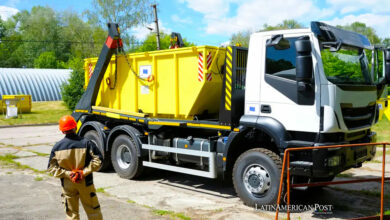Wine tourism: the route of the best wines of Latin America
Listen this article
A trip full of flavors through the distinctive places of wine production in the region

Wine arrived in America from the hand of the Spanish conquest, although the crown prohibited its production on American soil over time. Spain did not want the colonies to be self-sufficient, nor did the wines produced in the Americas compete with the ones made on the peninsula, says the Spanish company Bodegas Carlos Serres. However, the wine culture was so rooted in the viceroyalties that its production was inevitable, so vineyards were established throughout the continent, which to this day retain their tradition and have become world-class products.
Leer en español: Enoturismo: la ruta de los mejores vinos de Latinoamérica
For wine lovers, visiting these cities offers a unique experience, as well as the variety of the vine, you can enjoy a high quality cuisine. These are the main points of interest for wine in Latin America:
Mendoza Argentina
The largest producer of wine in Latin America is Argentina, whose great part of the production is in Mendoza, a flagship industry of the country. Malbec is one of the best strains consumed in the land of tango. From small and artisan producers, to large companies, Argentinian wines offer world-class flavors. Throughout the valleys of Mendoza you can make tours through the different vineyards and wineries to do wine tastings. The tradition of roasting and cheeses make Mendoza a unique place for the consumption of the best wine.
Valle de Guadalupe, Baja California, Mexico
Due to its geographical conditions, the Californias are called the "Mexican Mediterranean", a place that has become the "Mexican Wine Empire", as defined by the magazine Gatopardo. After the crisis of the 80s, when Mexican wine did not compete with the foreigner, a stage of modernization that has been a success began. Producers and consumers from all over the world have come to Baja California to boost the industry. Beautiful beaches and the gastronomy of the region are the perfect complement to enjoy the multiple flavors of Mexican wine .
Valle del Maipo, Chile
Chile has become the largest exporter of wine in the region, above Argentina that has a greater tradition. The Maipo region is home to dozens of vineyards that produce wine of the highest quality, between reds and whites, because the Chilean geography offers unique drinks. The strain with the most planting space is Cabernet Sauvignon, and it is no coincidence that the newspaper La Tercera named a Cabernet Sauvignon from the Chadwick vineyard as the country's best red wine.
You can also read: Cenotes de Yucatán: The portals to the Mayan paradise
Canelones, Uruguay
Uruguay is a small country in size but huge in culture and tradition, and its wines have been representative in the region for a long time. The Tannat variety, brought from France at the end of the 19th century, has become the most representative in the country, according to Bodega Garzón. The strain adapted well to Uruguayan soil and has made a solid industry flourish. In addition, its wineries are perfect for wine tourism, especially in the region of Canelones where Forbes MX magazine places the winery De Lucca as one of the best and oldest, open to wine lovers' visits.
Bento Gonçalves, Rio Grande do Sul, Brazil
The South American giant has increased and improved its wine production, especially in terms of sparkling wine. Portafolio magazine assures that Brazilian wines have received more than 3,000 awards for their quality. Their relationship with the Portuguese, Spanish and Italian tradition have been the strongest elements in the development of his wine. Technology and the arrival of large companies has boosted its industry, especially in the region of the Valley of the vineyards in the state of Rio Grande do Sul, a place full of tourist attractions where you can enjoy a glass of the best Brazilian wine.
LatinAmerican Post | Luis Angel Hernandez
Translated from "Enoturismo: la ruta de los mejores vinos de Latinoamérica"





